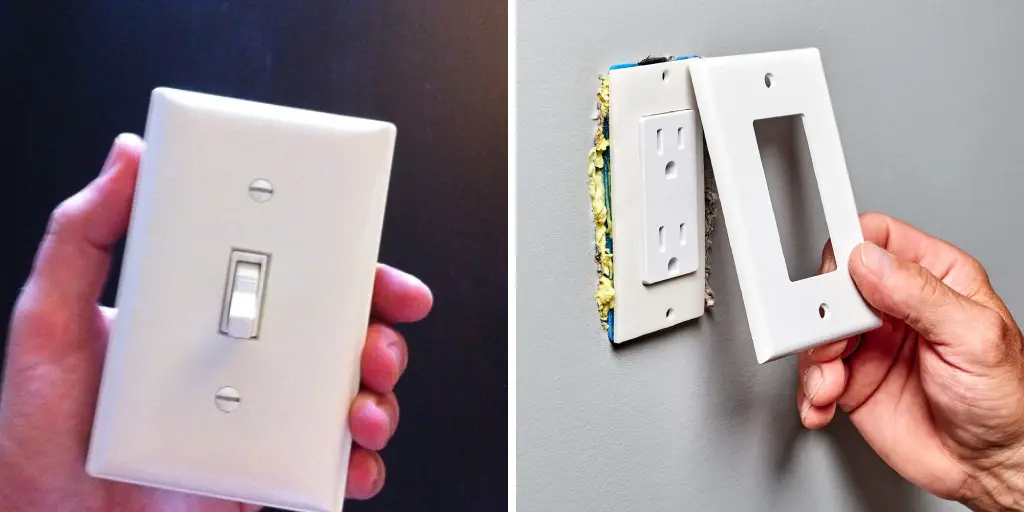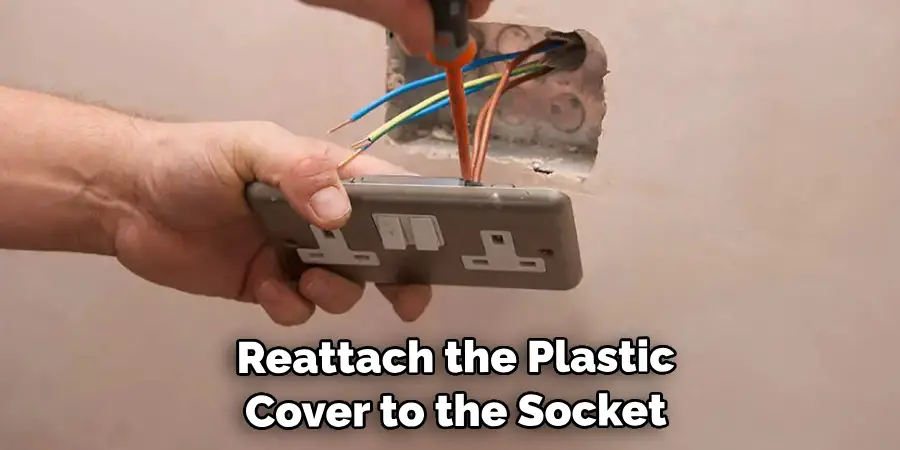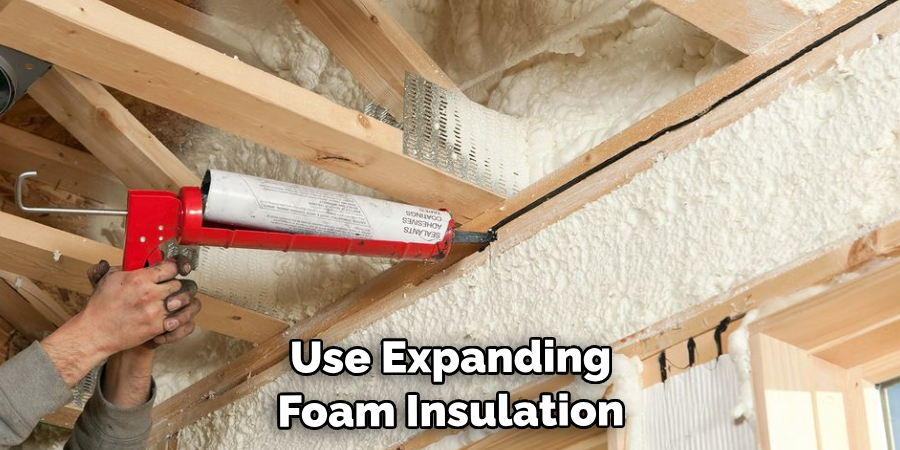Are your energy bills making your wallet feel lighter than it should? The right insulation can keep warm air in and cold air out so you don’t waste your hard-earned money on excessive heating and cooling costs. One of the easiest ways to improve your insulation is to learn how to insulate light switches.

Not only does this prevent drafts from slipping around switches, but it also stops heat or cool air from escaping through these outlets which can add up in terms of energy savings! We’ll walk you through all the essential steps needed for installing insulation around light switches so that you can start reaping the benefits as soon as possible!
Necessary Tools and Materials
Here’s what you’ll need for this simple yet effective project:
- Insulation Foam Sealant
- Screwdriver
- Plastic Outlet Covers or Insulation Gaskets (Optional)
11 Step-by-step Instructions on How to Insulate Light Switches
Step 1: Turn Off the Power
This step is crucial for your safety. Locate the circuit breaker and turn off the power supply to the light switch you’ll be working on. You can also use a voltage tester to ensure that the power is indeed off. But remember, always proceed with caution! Although this project is relatively low risk, you should never underestimate the dangers of working with electricity.
Step 2: Remove the Switch Cover
Remove the plastic switch cover by unfastening the screws on either side with a screwdriver. Make sure to save these screws as you’ll need them later. It’s always a good idea to have some form of organization when working with small parts. You can use a container or a bowl to store them safely. But if you’re feeling confident, you can simply use your hand to unscrew them and hold onto the screws too.
Step 3: Pull Out the Switch
Once you’ve removed the cover, gently pull out the switch from its socket. Be careful not to damage any wires attached to it as this may lead to bigger problems down the road. If needed, you can use a screwdriver to loosen any stubborn wires. It’s important to leave the wires attached and avoid disconnecting them.

Step 4: Begin the Insulation Process
Now it’s time to start insulating! Shake your insulation foam sealant canister well before use. Carefully spray the foam around the switch socket, making sure to cover as much area as possible without going overboard. You want enough coverage for effective insulation, but not so much that it spills out and creates a mess. It’s always better to start with less and add more if needed.
Step 5: Check for Gaps
Once you’ve sprayed the foam, check for any gaps or holes that may need additional insulation. These can be found around the edges of the switch socket as well as any crevices or openings in the wall itself. Apply more foam as needed until all visible gaps are filled. But always keep in mind not to overdo it, as too much foam can harden and create a problem when trying to reinstall the switch later on.
Step 6: Replace the Switch
Carefully push the switch back into its socket, making sure not to disturb the foam insulation too much. If an outlet gasket or plastic cover is being used, now would be the time to place it over the switch before screwing on the cover. This will help prevent any air leakage around the edges of the switch.
Step 7: Reattach the Cover
Using the screws you saved earlier, reattach the plastic cover to the socket. Make sure not to over-tighten them as this may cause damage. Just tighten them enough so that they are secure in place. However, if your switch cover is cracked or damaged, this would be an excellent time to replace it with a new one. But if it’s still in good condition, you can always use it again for another project.

Step 8: Repeat Process for Other Switches
If you have multiple light switches in the same room, repeat the insulation process for each one. It’s a good idea to work your way around the room in a systematic manner so that no switch is forgotten. This will also help with organization and prevent any confusion later on. It’s also an excellent opportunity to double-check that all switches are properly insulated and no gaps have been left uncovered.
Step 9: Inspect the Area
Once you’ve completed insulating all your light switches, take a few minutes to inspect the area for any leftover foam residue or spills. Clean up any mess with a damp cloth and allow it to dry before replacing any furniture or decorations. It’s always better to be safe than sorry, so it’s advised to check again for any leftover foam before leaving the area.
Step 10: Turn On the Power
Now that everything is back in place, go to the circuit breaker and turn on the power supply again. Test your light switches to make sure they’re working correctly. If all goes well, you should notice a difference in how warm or cool air stays within the room compared to before insulating. Always run a final check to ensure that there are no power or electrical issues.
Step 11: Enjoy the Benefits
Congratulations, you’ve successfully insulated your light switches! You should now start to notice a difference in your home’s overall temperature and energy consumption. By insulating light switches, you’re not only saving money but also contributing to a more sustainable environment by reducing energy waste. The best part is that you can apply these same steps for insulating outlets too! So go ahead and enjoy the benefits of a well-insulated home!

Additional Tips for Insulating Light Switches
- Always Read and Follow the Instructions on Your Insulation Foam Sealant Canister.
- Use a Mask and Gloves When Working With Insulation Foam to Protect Yourself From Any Potential Irritants.
- If You Have Trouble Removing the Switch Cover, Try Using a Flathead Screwdriver to Gently Pry It Open. But Be Careful Not to Damage the Cover or Injure Yourself in the Process.
- For Added Protection, Consider Insulating the Wall Behind the Switch as Well. This Will Help Prevent Any Air Leakage From Outside.
- If You Are Unsure About Your Electrical Abilities, It’s Always Best to Hire a Professional Electrician for This Task.
- Regularly Check and Maintain Your Light Switches’ Insulation to Ensure Maximum Effectiveness. Over Time, Foam Can Shrink or Deteriorate, So It May Need to Be Reapplied.
- Insulation Foam Can Expand and Harden Quickly, So Work Efficiently to Prevent Any Mishaps. If You Do Get Foam on Unintended Areas, Clean It Up Immediately With a Damp Cloth Before It Dries.
- Keep an Eye Out for Any Signs of Water Damage or Mold Around Your Light Switches. This Could Be a Sign of Poor Insulation and May Require Professional Assistance.
- Remember to Turn Off the Power Supply Before Starting Any Insulation Work. Safety Should Always Be a Top Priority.
- Don’t Forget to Insulate Your Light Switches in Areas That Are Not Frequently Used, Such as Basements or Attics. These Areas Can Contribute to Energy Loss if Left Uninsulated.
- Lastly, Enjoy Peace of Mind Knowing That Your Home is Well-insulated and Energy-efficient Thanks to Your Efforts in Insulating Light Switches. So Next Time You Feel a Draft or Notice a Spike in Your Energy Bill, You Know What to Do! Happy Insulating!
Frequently Asked Questions
Q1: Is It Necessary to Insulate Light Switches?
A1: While not essential, insulating light switches can help improve the energy efficiency of your home by preventing air leakage from the walls. It can also contribute to maintaining a consistent temperature in the room, making it more comfortable for you and your family.
Q2: Can I Use Any Type of Foam Insulation?
A2: It is recommended to use expanding foam insulation specifically designed for electrical outlets and switches. This type of foam will expand and harden quickly, creating an airtight seal around the switch, making it more effective in preventing air leakage.

Q3: Can I Reuse the Switch Cover After Insulating?
A3: Yes, you can reuse the switch cover as long as it is still in good condition. However, if it is damaged or cracked, it is recommended to replace it with a new one for optimal insulation.
Conclusion
Overall, if you want to learn how to successfully insulate your light switch and socket outlets, following the steps discussed in this blog post will help you make your home a safer environment. You can take further measures such as using special wire outlet seals or even covering outlets when they are not in use. Also, don’t forget that for any major electrical work, it is best to seek professional guidance from experienced electricians.
All that’s left to do now is to get started on insulating your light switches and socket outlets for a safer space! Contact an electrician today and inquire about their services to ensure safety at home. Thanks for reading this article on how to insulate light switches.

